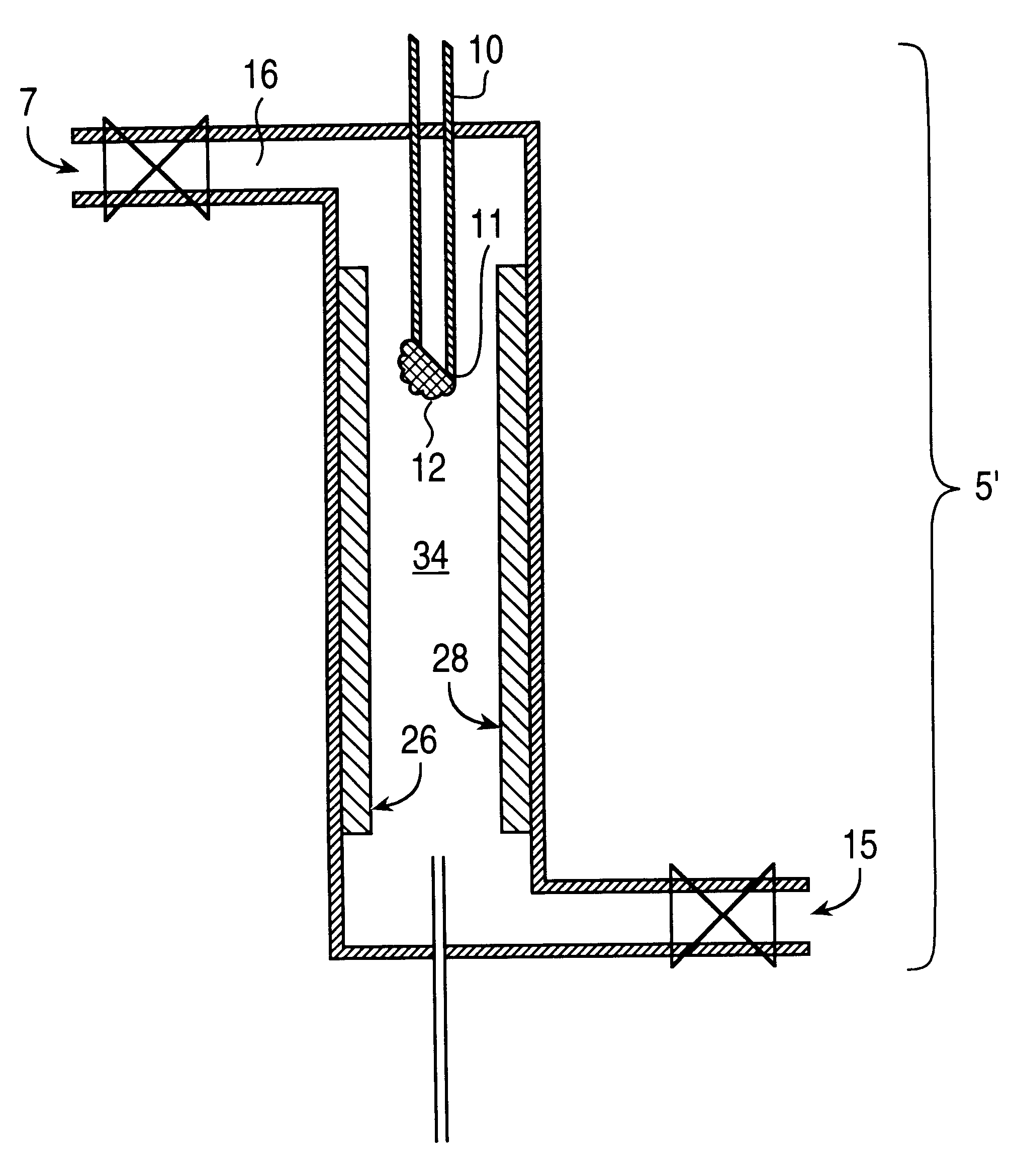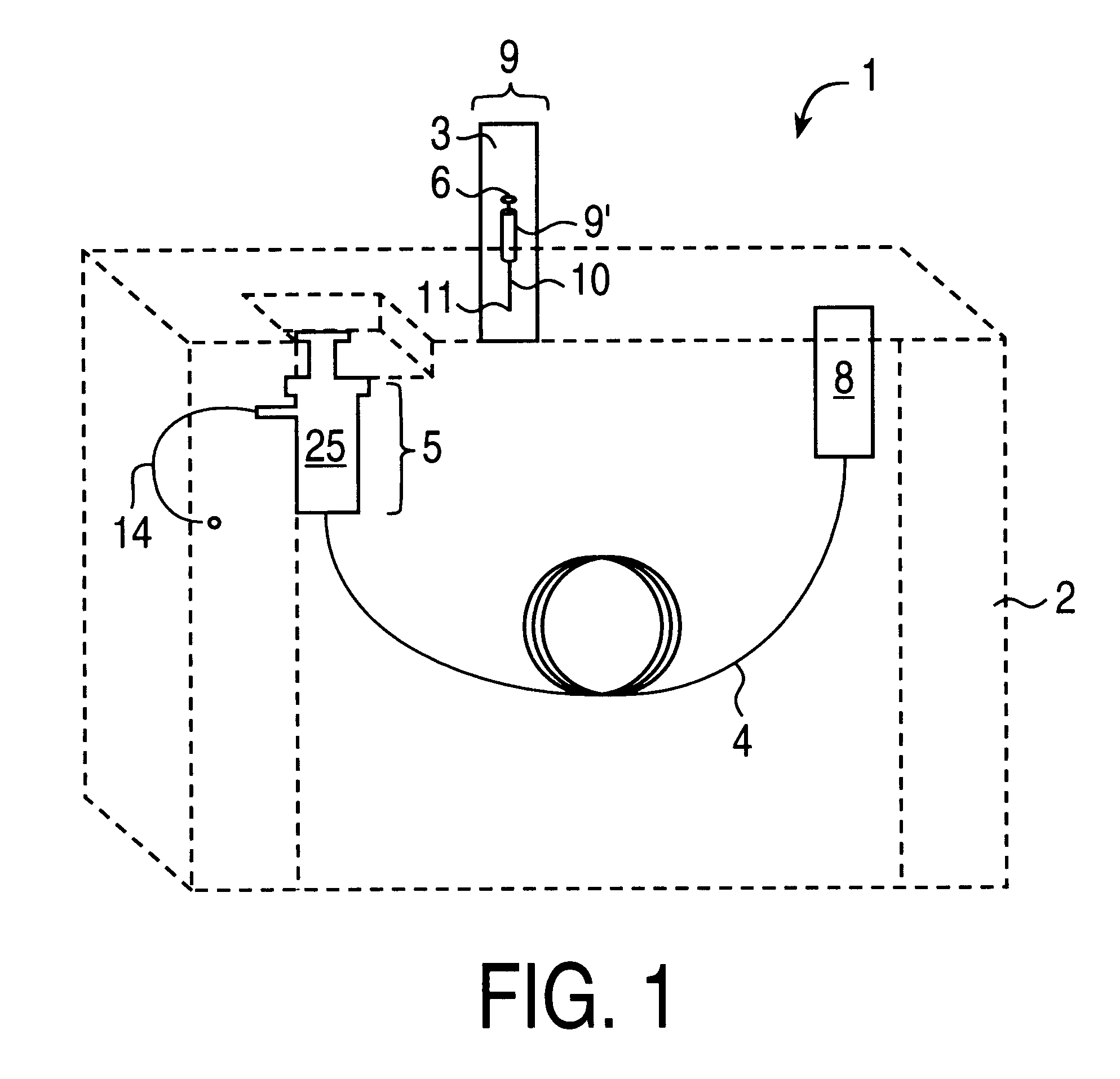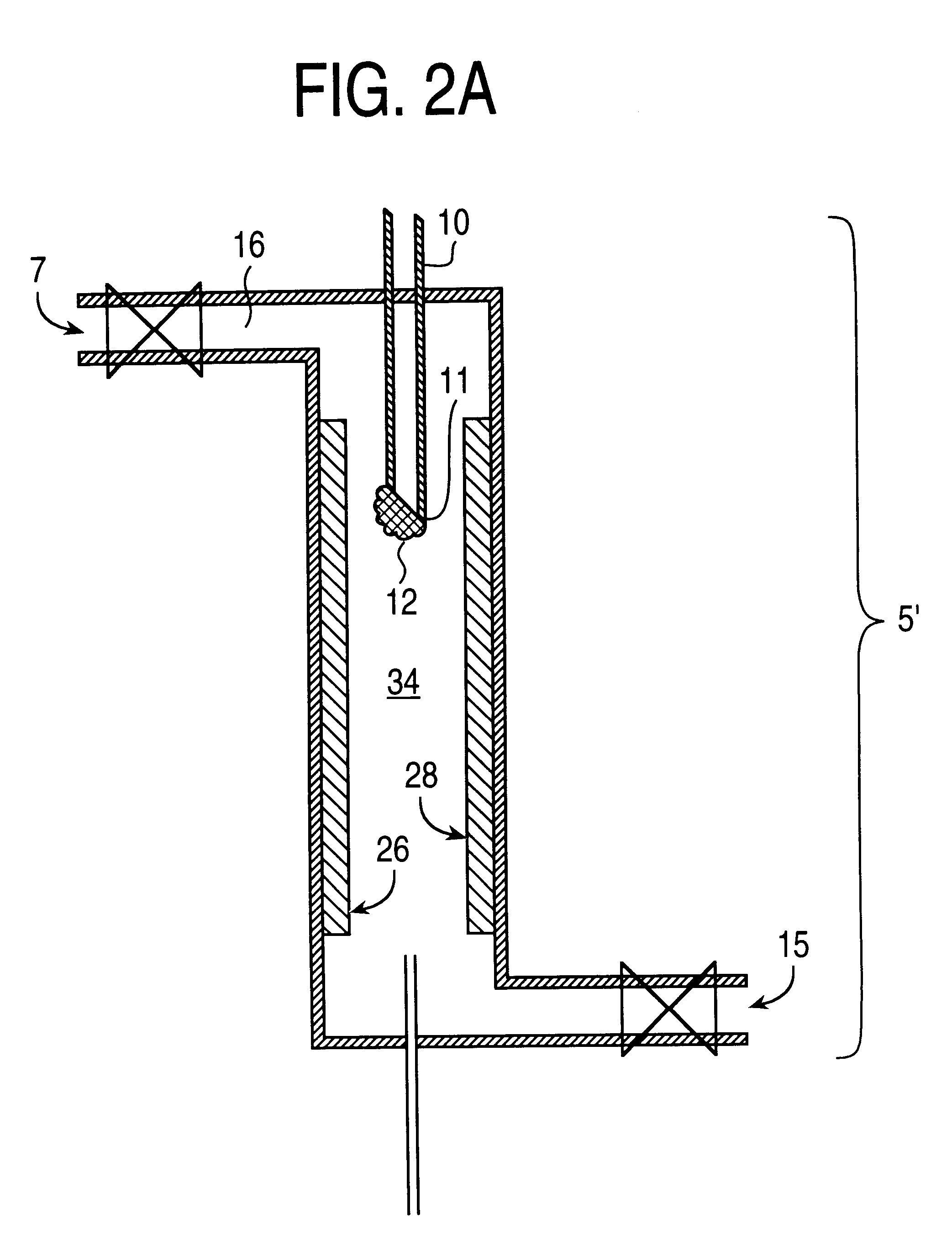In Situ concentration of an analyte
an analyte and concentration technology, applied in the field of in situ concentration of analyte, can solve the problems of sample loss, increased expense, and limited volume of standard volume pre-column inlet arrangement and existing large volume port technology
- Summary
- Abstract
- Description
- Claims
- Application Information
AI Technical Summary
Benefits of technology
Problems solved by technology
Method used
Image
Examples
Embodiment Construction
As a specific example, typical analyte concentration factors are around 1000-fold before injecting 1 or 2 micro-liters of solution out of a total volume of 1-ml; i.e., 1000-ml of extraction solvent is condensed to 1-ml. If the injection volume is scaled up to 100 .mu.l, then to maintain the same effective amount of analyte injected, only a 10-fold concentration factor need be generated on the bench; i.e., 10-ml of extraction solvent is condensed to 1-ml. The extract is concentrated about 20 or 1000 fold. Solvent can be readily removed from analyte according to the results of various tests that may be conducted with the solvent, rate of heating / gas flow, amount of sample dispensed onto the syringe needle tip, miscibility and volatility of the solvents, shape of the syringe needle tip as well as materials and compositions. Each of these factors could effect the overall final concentration of the analyte that remains on the syringe needle tip. In addition, the rate of gas flow and samp...
PUM
| Property | Measurement | Unit |
|---|---|---|
| boiling point | aaaaa | aaaaa |
| concentration | aaaaa | aaaaa |
| time | aaaaa | aaaaa |
Abstract
Description
Claims
Application Information
 Login to View More
Login to View More - R&D
- Intellectual Property
- Life Sciences
- Materials
- Tech Scout
- Unparalleled Data Quality
- Higher Quality Content
- 60% Fewer Hallucinations
Browse by: Latest US Patents, China's latest patents, Technical Efficacy Thesaurus, Application Domain, Technology Topic, Popular Technical Reports.
© 2025 PatSnap. All rights reserved.Legal|Privacy policy|Modern Slavery Act Transparency Statement|Sitemap|About US| Contact US: help@patsnap.com



